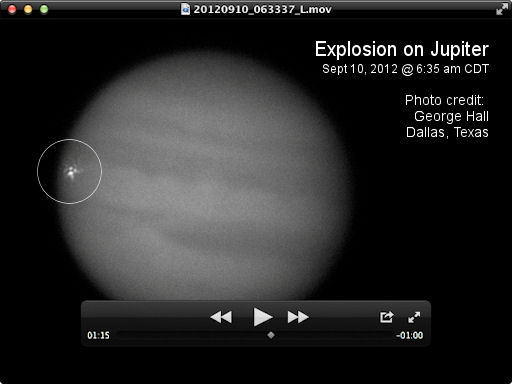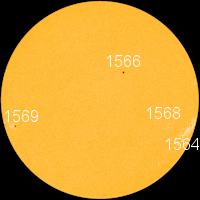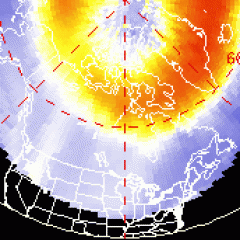~Space Weather Update~ EXPLOSION ON JUPITER: [1]
DOUBLE ASTEROID FLYBY: A pair of big, near-Earth asteroids will fly by the Earth-Moon system on Sept. 14th. 2012 QG42 [2] is a 300-meter space rock that comes from the inner asteroid belt; it will pass 2.8 million km (7.4 lunar distances) from Earth. 2012 QC8 [3] is even bigger, about 1.1 km in diameter, hailing from the vicinity of Jupiter; it will pass about 8.7 million km (22.7 lunar distances) from Earth. Astronomers [4] monitoring [5] the incoming space rocks say they are glowing like 14th to 15th magnitude stars, which makes them good targets for advanced amateur telescopes. Ephemerides: 2012 QG42 [6], 2012 QC8 [7].
EXPLOSION ON JUPITER: Apparently, something hit Jupiter during the early hours of Sept. 10th (11:35 UT), igniting a ferocious fireball in the giant planet's cloudtops. Amateur astronomer Dan Peterson Racine, Wisconsin, saw it first through his Meade 12" LX200 telescope. "It was a bright white flash that lasted only 1.5 - 2 seconds," he reports. Another amateur astronomer, George Hall of Dallas, Texas, was video-recording [8] Jupiter at the time, and he confirmed the fireball with this video screenshot:
 [8]
[8]
Impact site coordinates: longitude 335o (system 1) and latitude +12o, inside the North Equatorial Belt's southern section.
The fireball was probably caused by a small asteroid or comet hitting Jupiter. Similar impacts [9] were observed in June and August 2010. An analysis of those earlier events suggests that Jupiter is frequently struck by 10 meter-class asteroids--one of the hazards of orbiting near the asteroid belt and having such a strong gravitational pull.
Astronomers around the world will now begin monitoring the impact site for signs of debris--either the cindery remains of the impactor or material dredged up from beneath Jupiter's cloud tops. Some impacts do [10] produce such debris, while others don't [11]. Researchers aren't sure why; perhaps this event will provide some clues. Stay tuned for news about what happens next.
Update: George Hall has posted a complete video of the explosion [8] on Flickr.
![]()
Solar wind
speed: 284.4 km/sec
density: 0.5 protons/cm3
explanation [12] | more data [13]
Updated: Today at 1626 UT
![]()
X-ray Solar Flares
6-hr max: C2 1111 UT Sep11
24-hr: C5 0000 UT Sep11
explanation [14] | more data [15]
Updated: Today at: 1600 UT
![]()
![]()
![]()
Daily Sun: 11 Sep 12
![]()
![]()
Sunspots 1569 and 1564 are crackling with minor C-class [14] solar flares. Credit: SDO/HMI
![]()
![]()
![]()
Sunspot number: 62
What is the sunspot number? [17]
Updated 11 Sep 2012
Spotless Days
Current Stretch: 0 days
2012 total: 0 days (0%)
2011 total: 2 days (<1%)
2010 total: 51 days (14%)
2009 total: 260 days (71%)
Since 2004: 821 days
Typical Solar Min: 486 days
Update 11 Sep 2012
The Radio Sun
10.7 cm flux: 111 sfu
explanation [18] | more data [19]
Updated 11 Sep 2012
![]()
![]()
![]()
Current Auroral Oval:
![]()
Switch to: Europe, USA, New Zealand, Antarctica
Credit: NOAA/POES
![]()
![]()
![]()
Planetary K-index
Now: Kp= 1 quiet
24-hr max: Kp= 1 quiet
explanation [21] | more data [22]
![]()
Interplanetary Mag. Field
Btotal: 3.8 nT
Bz: 2.2 nT south
explanation [23] | more data [24]
Updated: Today at 1626 UT
![]()
![]()
![]()
Coronal Holes: 10 Sep 12
![]()
![]()
There are no large coronal holes on the Earthside of the sun. Credit: SDO/AIA.


